Vittorio Brodmann. Become Door
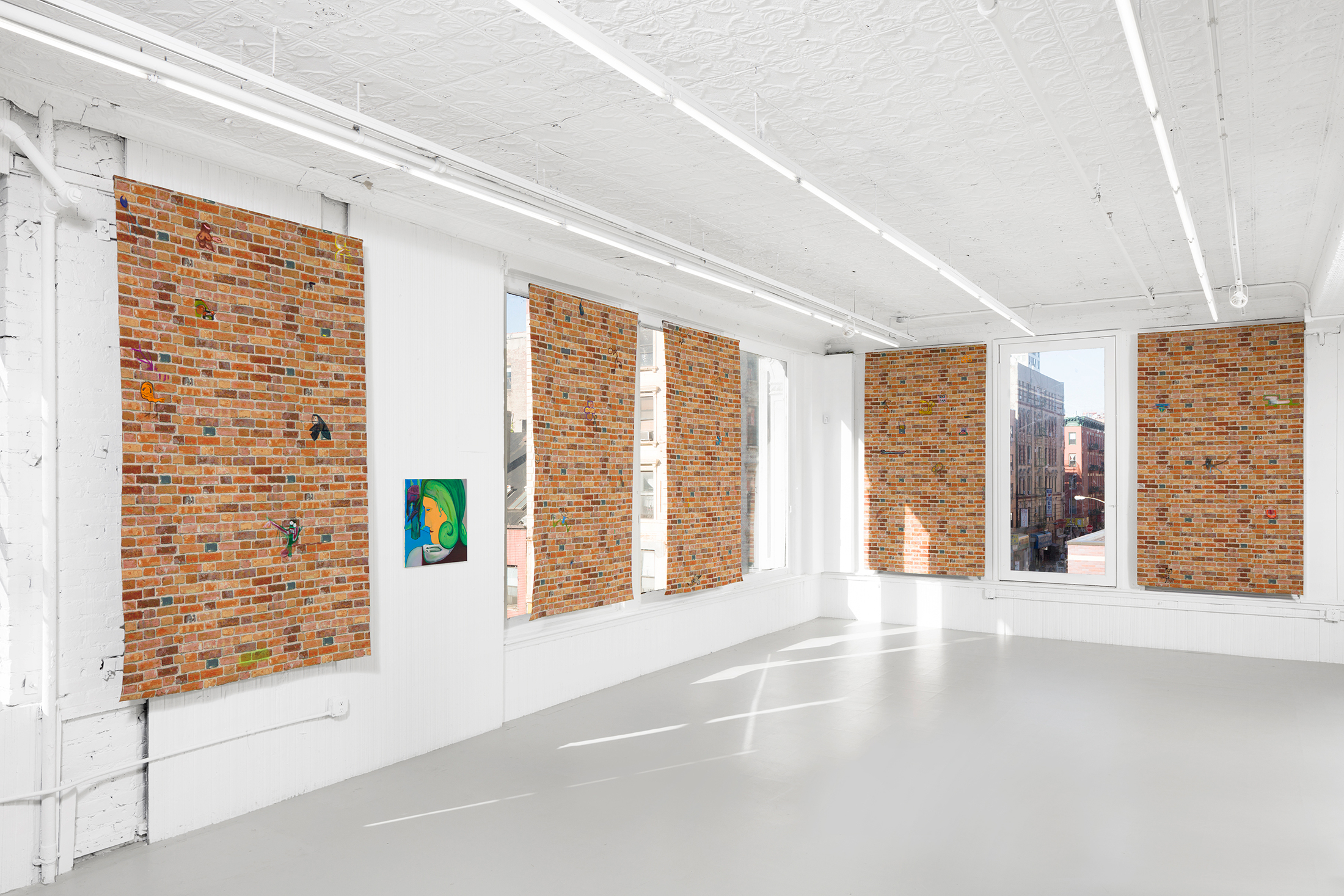
VITTORIO BRODMANN, Become Door
exhibition view at Gavin Brown, New York, October-November 2016
–
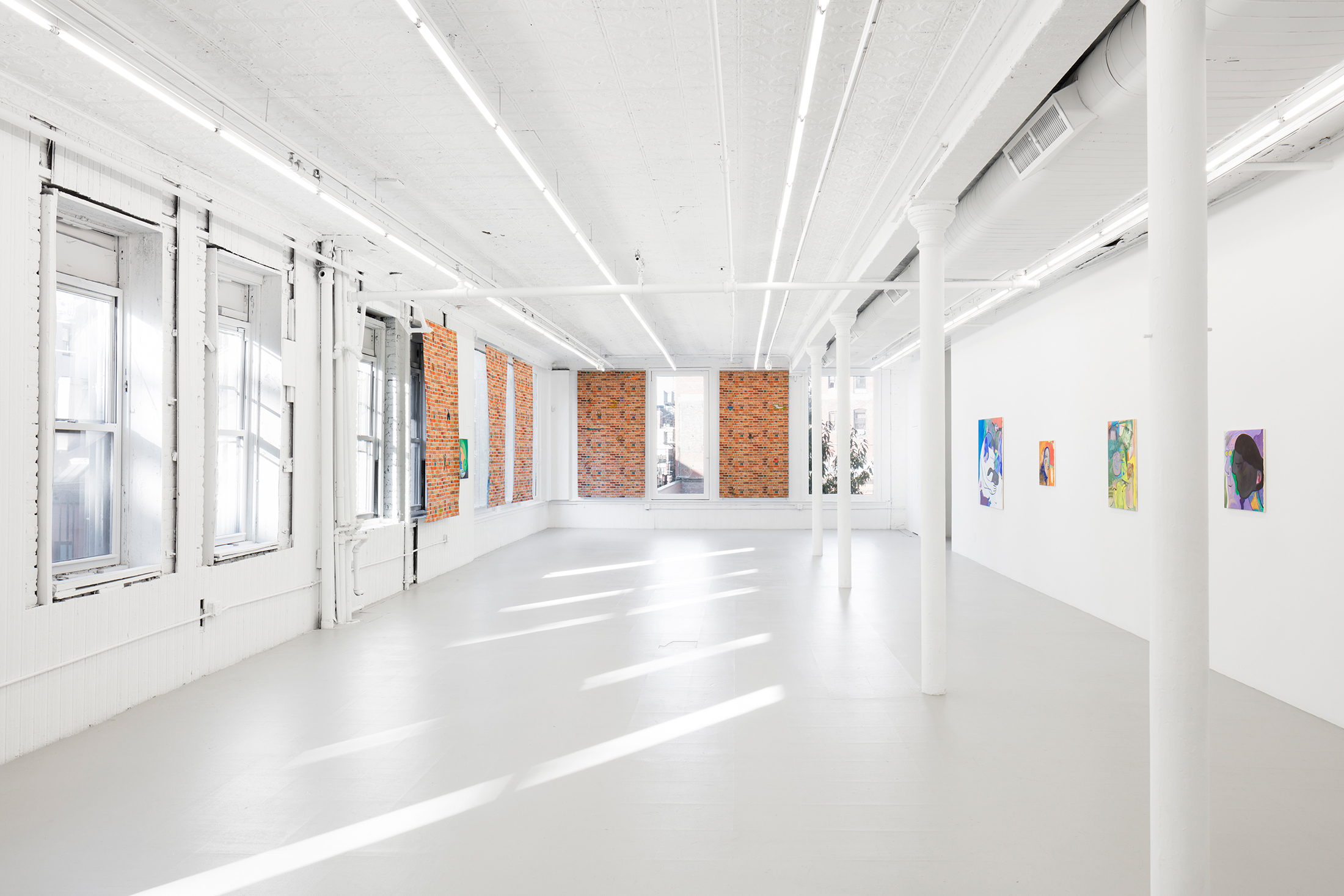
VITTORIO BRODMANN, Become Door
exhibition view at Gavin Brown, New York, October-November 2016
–
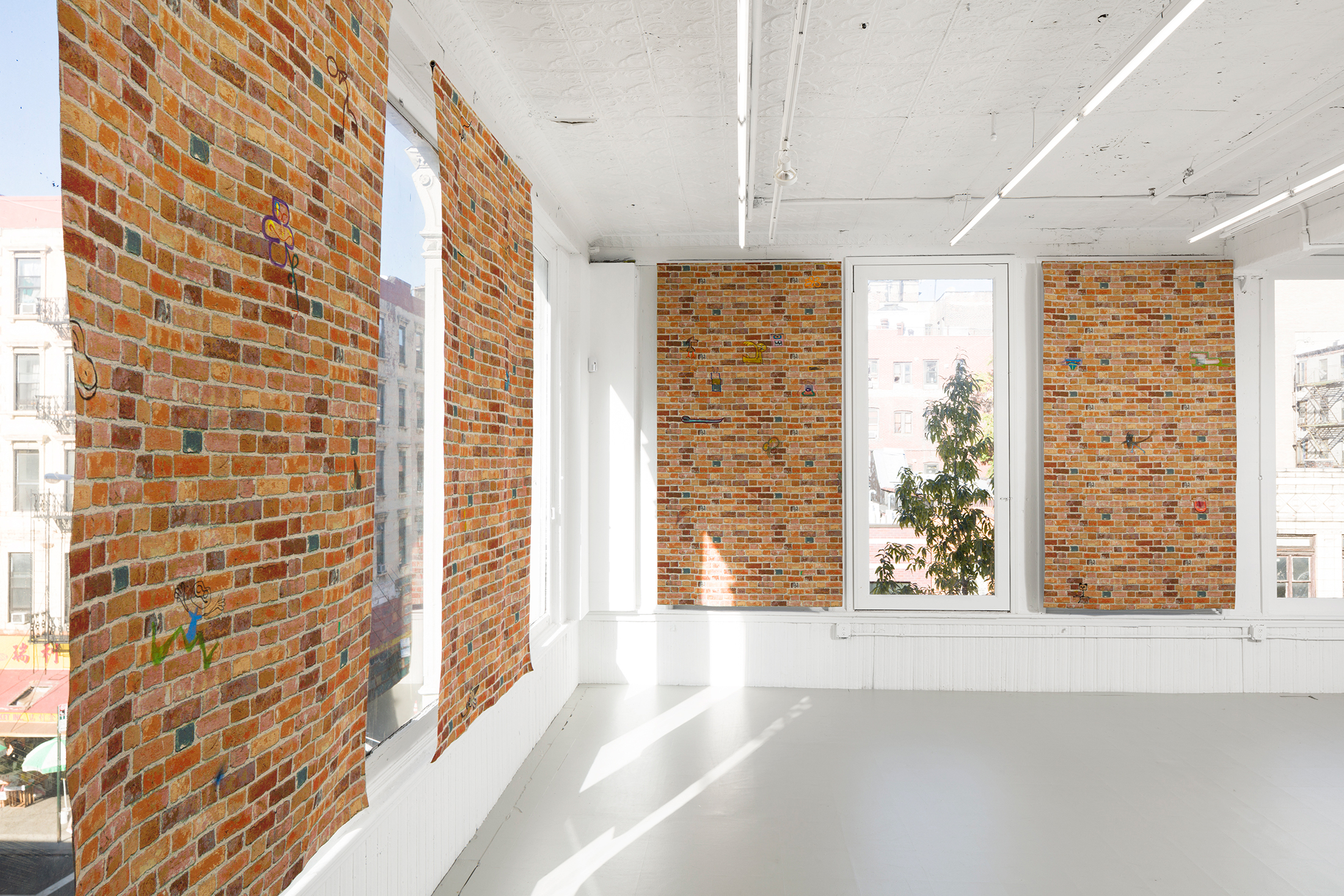
Barking up a Tree, 2016
oil on fabric, double-sided, each 95 x 55 inches (240 x 140 cm)
–
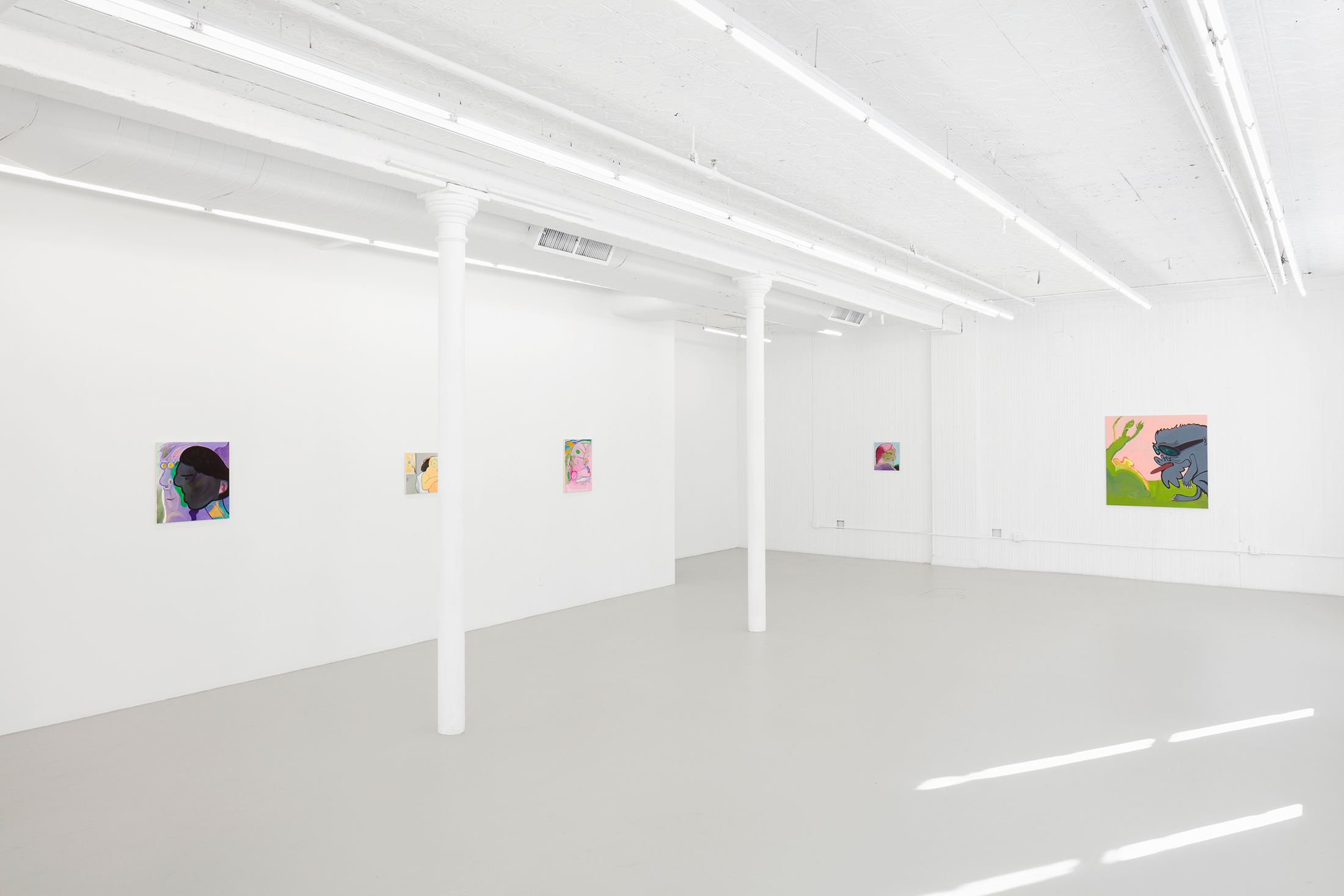
VITTORIO BRODMANN, Become Door
exhibition view at Gavin Brown, New York, October-November 2016
–

Extending the Frontiers, 2016
oil on acrylic on linen 16 x 15 inches (40 x 38 cm)
Chosen to Ignite, 2016
oil on acrylic on linen 43 1/4 x 43 1/4 inches (109.9 x 109.9 cm)
–
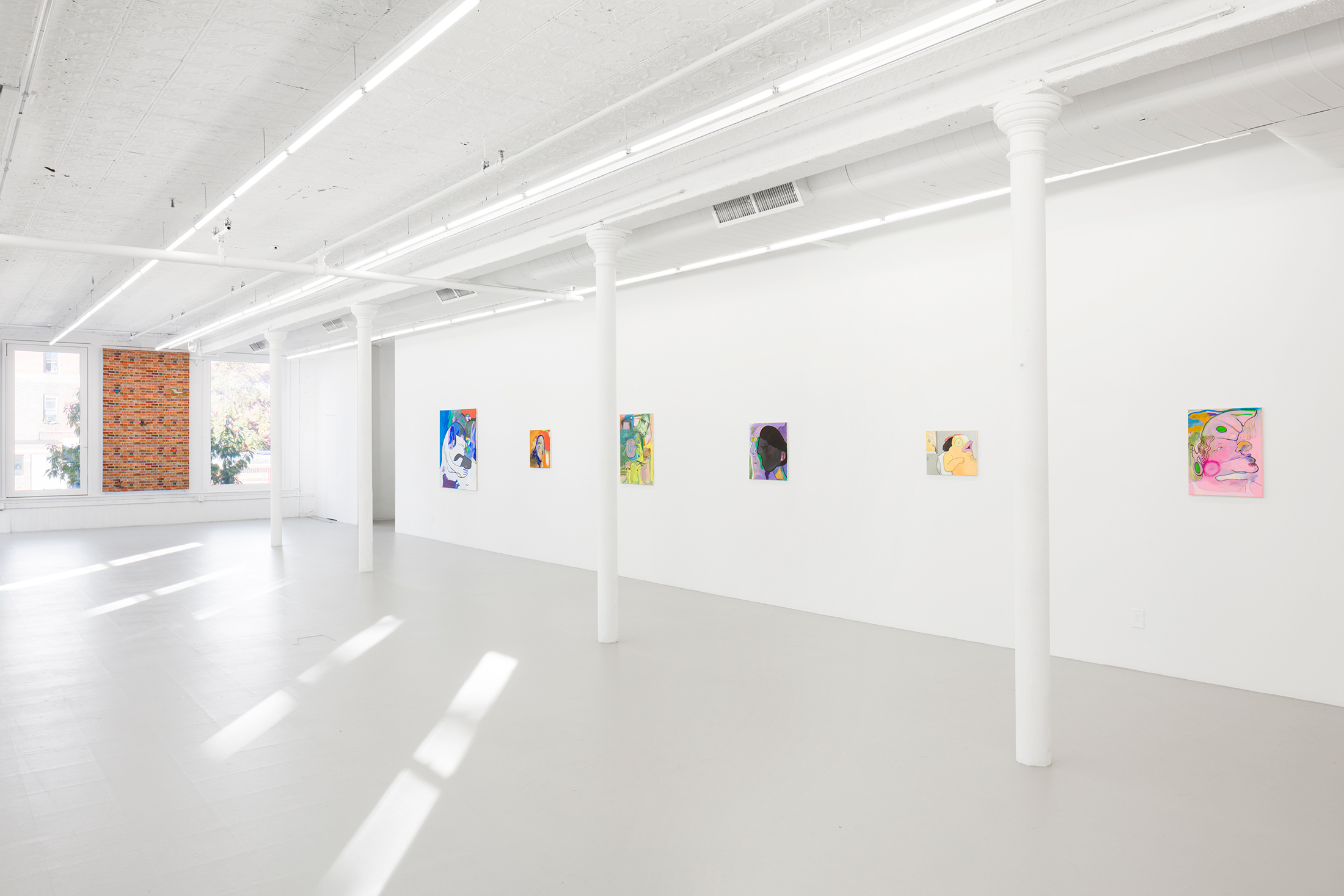
VITTORIO BRODMANN, Become Door
exhibition view at Gavin Brown, New York, October-November 2016
–
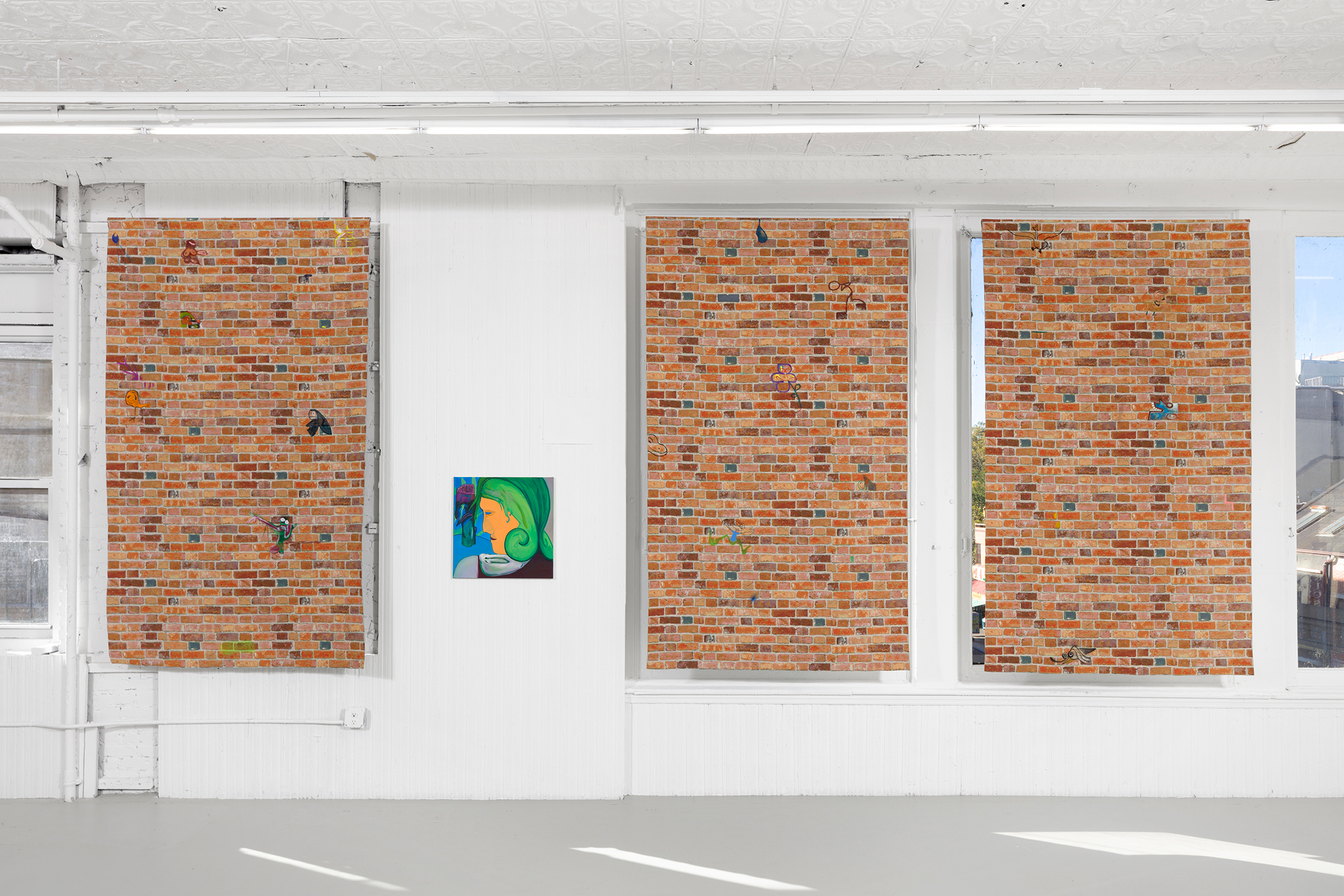
Barking up a Tree, 2016
oil on fabric, double-sided, each 95 x 55 inches (240 x 140 cm)
Anticipointment, 2016
oil on acrylic on canvas 21 5/8 x 21 5/8 inches (55 x 55 cm)
all images courtesy of the artist and Gavin Brown’s enterprise, New York
–
Become Door is the new solo exhibition by VITTORIO BRODMANN that is currently presented at the New York gallery Gavin Brown’s enterprise. The interview published below is a conversation between VITTORIO BRODMANN and curator TENZING BARSHEE.
–
TENZING BARSHEE: How many paintings are you currently working on?
VITTORIO BRODMANN: Maybe fifteen.
TB Is that normal for you?
VB It’s usually between three and fifteen.
TB Do you have them laid out next to one another?
VB They’re all standing and hanging in my studio. I’ll work on up to four a day or just one. If it’s a good day, I need multiple options. The pressure to get the one painting right is too much.
TB Is this process an intuitive chain of events?
VB Yes, I might work on a large format and realize I need to switch to a smaller one. Usually I work on a different one than the day before.
TB This bouncing back and forth between different forms and shapes happens daily in your studio but over longer periods of time as well. After mainly painting small formats for years, you recently made a huge canvas, five and a half by ten meters. Possibly the largest you’ll ever make?
VB There are several things that made this transition interesting and possible. First of all, the painting was made for a specific room, which is the main hall at Kunsthalle Bern. To make this painting meant I needed to engage with the spatial structure and architecture. I’ve always thought of the gestures that make up my paintings as a type of slapstick, which generates the cartoony characters that I employ. When I tried to figure out what to do on fifty-five square meters—by testing new tools and climbing the ladder to see how everything looked—my labor definitely turned comedic.
TB Can you talk more about your figures and the slapstick that drives their composition?
VB They are usually imaginary portraits, exposed and self-sufficient, taking part in casual conversation or a shared understanding, and it takes time and affection to make them. It’s important for me to understand the canvas as a stage, on which my gestures produce these characters and their actions, and they, in turn, set the stage for future ones that might join them. In this sense, once a figure has emerged, it makes demands and I deal with them in a selection process, not unlike casting a film.
TB That sounds brutal.
VB [laughs] Well, a character might be making a good first impression and look flashy, quirky, or whatever, but while its appearance is vital, that may as well distract from what matters. The character might turn out to be a dimwit, not achieving what it has to, and then I ask it, gently, to leave, so it has to go away.
TB What about the situation that you create?
VB I analyze how particular roles work in a given setting. For that, I looked closely at structural parallels in sitcoms [situation comedies]. The limitation to a stage: a given environment, like a living room, café, or bar, et cetera. Basically, a nutshell where all of life supposedly happens. This is actually one of my main subjects.
TB How do your figures end up interacting?
VB The premise might be a binary situation. This can be quite flat, an everyday scene with a high level of relatability, an account of a social exchange. An initial character does the setup for the following one. Once they assemble, a problem arises, then others may join.
TB Can we make an analogy to stand-up comedy here?
VB In the instant, when we hear a comedian tell a joke, we are aware of the fact that this joke has been told a hundred times before. But we laugh like it’s the first time. Delivery is a matter of sympathy. Even if it works the other way around. You can love to hate someone. I intend to depict these situations genuinely, and concurrently I attempt to escalate them. This sequence of conditional events pretty much guides my process, which writes the narrative of an image. I’m interested in these stereotypical moments that make up an emotional-psychological moment that implies tension, like a date or a group of people coming together, connected yet alone. This depiction of an emotional state and a psychological condition—
TB —is in fact not as flat and polemical as the original stereotype suggests, but something that feeds off of complex human interplay.
VB I’m aiming for all that range. It’s really important that these figures always know they’re made up of brushstrokes and at the same time are able to achieve more than that. That’s how I tune the humor. A jokey character isn’t really convincing on its own; same thing with the stuck-up or serious ones. Sometimes you need to go full frontal and other times it requires a more subtle, poetic approach, almost devoid of humor. This helps to delineate the space of the stage and brings us back to the quality of delivery—a comedian has to achieve this but paintings do as well, on the back of their vocabulary of gestures and signs. This has to happen as believably as a joke does in order to pull off what it needs to do. It is rooted in a system of belief and disbelief in signs and matters of aesthetics. I’m trying to manage the balance between reaffirming and questioning this system.
TB In your imagery, you layer abstraction on figuration, and vice versa. How does that happen?
VB I intend to be simultaneously aware of both spheres. But there is a tendency to figuration, and I have to admit to a hierarchy between the two. The figure is definitely more accentuated. On the other hand, an abstract part may evoke a figure. I usually look for the space in between, where neither is fully articulated. Something like a digital rendering mistake: that’s where abstraction gains weight as it becomes a tool to abort the narrative and enhance a sense of artificiality. This process is dialogical.
TB The kind of “slapstick painting” you describe involves potential failure, mishaps, and vulnerability. That is something I’ve been tracing throughout your work in recent years. The fine line between exposing and exhibiting an object or the image of the artist itself. Five years ago, you imitated the dance moves of the pop icon Ciara as a public performance. By affirming these moves as an amateur dancer you were also exposing the image of yourself as an artist.
VB My intention was to take something that works perfectly, and try to apply it in a different context and expose myself. My lack of ability, and attempt to re-create it as an approximation to the original, turned myself into the cliché of the laughable artist.
TB This image of the “laughable artist” is a recurring motif. You went on to do public stand-up comedy, portray a painter as a shrimp in a collaborative video piece, and recently dressed as a large banana to perform in front of your huge painting at Kunsthalle Bern. Is this something you’re interested in developing?
VB These are all references to popular culture and the mass media: stand-up comedy, sitcoms, tropes of theater or cabaret, and so on. This harks back to my wish to approach any given subject through humor. I look for different disciplines and methods to do that. The image of an artist as a comedian is something that I care about, as comedy has an analytical aspect but at the same time never takes its own position too seriously. When you’re willing to make fun of yourself and your subject, it also allows you to get closer and question the authority of both.
–
Become Door is on view until November 13, 2016.
–
–
comments are closed !